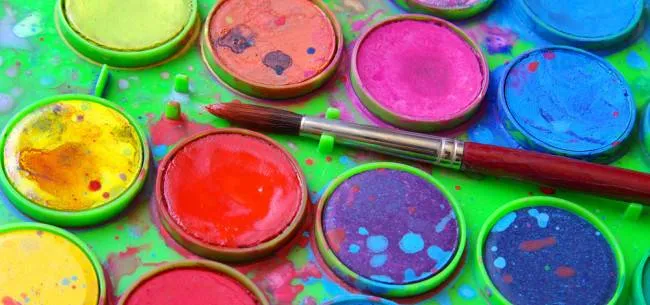
Jumpstart Your Art: Books To Revive Your Creative Spirit
This content contains affiliate links. When you buy through these links, we may earn an affiliate commission.
Like all people who are creative, I go through droughts. I’m a big believer in the power of those droughts though, especially as my job is, in part, to tap into my creativity to be successful. Droughts are part of the process — you need them to rest, relax, reflect, and reconsider your message and your objective. There’s a reason that nature has four seasons. You have periods of non-stop growth, but it has to be followed by slower, less fruitful periods, else you have no reason to keep pushing and challenging yourself.
But sometimes, those quiet seasons can still demand you create. For me, those times are about quiet creation: these are things I do for me and only for me. They’re private. They let me reconnect with why I love creating. Sometimes, this creation comes in ways that don’t last long but exercise my brain in a different way. I’ll decide I want to paint for a week, snag acrylics and a few canvases, and go to it for a short period. Then I’ll put that away and go back to a serious writing season. Other times, I’ll drag out the mandolin, pluck the strings for an hour or so, and then put it back into the closet for another year. Even cooking for me becomes a creative endeavor; it’s one of those activities that actually lets me achieve flow.
I’m also a huge fan of pulling out a fresh notebook and pen to write freehand, whether it’s a poem or lists. I love creating lists of words I love, of words I don’t like, of phrases that catch my ear just right, and so forth.
It can be really intimidating to jump into a new hobby or creative pursuit sometimes. It can also just be scary if you feel like your well is completely dry, even for those things you once thrived off while doing. Fortunately, there are so many solid books out there that talk about the creative process, about how to make and create from the world right inside your home, and how to push yourself to try new, different, and ultimately, useful things that stretch your talents outside your comfort zone.
 Tattoo A Banana and Other Ways to Turn Anything and Everything into Art by Phil Hansen
From Phil Hansen, renowned multimedia artist whose TED Talk “Embrace the Shake” is inspiring individuals around the world to overcome their limitations and express themselves creatively, comes this entertaining and witty guide to turning everyday objects into art. Using items that include a piece of toast, a plastic bag, or even just your own fingerprints, this fun and captivating guide will inspire you to get creative.
Whether you want to jumpstart, rediscover or further your creative pursuits, this book will help you build your creative muscles by experimenting with the unexpected. Once you tattoo a banana, print on marshmallows, or mold a Mona Lisa sugar cookie, you’ll definitely be curious about what else is possible.
Read this when. . . you are looking for creative ways to play with your food. It’ll force you to look at the every day objects in your own worldspace that can inspire creativity and out-of-the-box thinking.
Tattoo A Banana and Other Ways to Turn Anything and Everything into Art by Phil Hansen
From Phil Hansen, renowned multimedia artist whose TED Talk “Embrace the Shake” is inspiring individuals around the world to overcome their limitations and express themselves creatively, comes this entertaining and witty guide to turning everyday objects into art. Using items that include a piece of toast, a plastic bag, or even just your own fingerprints, this fun and captivating guide will inspire you to get creative.
Whether you want to jumpstart, rediscover or further your creative pursuits, this book will help you build your creative muscles by experimenting with the unexpected. Once you tattoo a banana, print on marshmallows, or mold a Mona Lisa sugar cookie, you’ll definitely be curious about what else is possible.
Read this when. . . you are looking for creative ways to play with your food. It’ll force you to look at the every day objects in your own worldspace that can inspire creativity and out-of-the-box thinking.
 Steal Like an Artist by Austin Kleon
You don’t need to be a genius, you just need to be yourself. That’s the message from Austin Kleon, a young writer and artist who knows that creativity is everywhere, creativity is for everyone. A manifesto for the digital age, Steal Like an Artist is a guide whose positive message, graphic look and illustrations, exercises, and examples will put readers directly in touch with their artistic side.
Read this when . . . you feel like you’re a fraud or that you’ve got nothing left creatively inside you. This is such a great jump starter of a book for me, in that I love seeing “how to” messages depicted in unconventional ways:
Steal Like an Artist by Austin Kleon
You don’t need to be a genius, you just need to be yourself. That’s the message from Austin Kleon, a young writer and artist who knows that creativity is everywhere, creativity is for everyone. A manifesto for the digital age, Steal Like an Artist is a guide whose positive message, graphic look and illustrations, exercises, and examples will put readers directly in touch with their artistic side.
Read this when . . . you feel like you’re a fraud or that you’ve got nothing left creatively inside you. This is such a great jump starter of a book for me, in that I love seeing “how to” messages depicted in unconventional ways:
 If this book ends up speaking to you, pick up Kleon’s Show Your Work. I think I might like that one a little bit better, but it’s less about kick starting creativity and more about how to engage people in your art — how you can use social media, for example, to give people a look “behind the scenes” of you doing your work and thus compel them to care.
If this book ends up speaking to you, pick up Kleon’s Show Your Work. I think I might like that one a little bit better, but it’s less about kick starting creativity and more about how to engage people in your art — how you can use social media, for example, to give people a look “behind the scenes” of you doing your work and thus compel them to care.
 Any coloring book that speaks to you (and some suggestions can be found right here).
Read this when . . . you really want to be creating something, but you need some sort of parameters from which to work. If the biggest choice you have to make is what kind of coloring tools to use and which colors to shade in, you can create in a way that’s relaxing and opens your mind up for free-flowing thought.
I kind of think that this mass explosion of coloring books for grown ups is best credited to good marketing right now. I’m a young adult, but my friends have been coloring for years and years into our adulthood — it’s not a new, hip, trendy thing for us. I colored this masterpiece at the ripe age of 28 (and yes I hung it on my fridge):
Any coloring book that speaks to you (and some suggestions can be found right here).
Read this when . . . you really want to be creating something, but you need some sort of parameters from which to work. If the biggest choice you have to make is what kind of coloring tools to use and which colors to shade in, you can create in a way that’s relaxing and opens your mind up for free-flowing thought.
I kind of think that this mass explosion of coloring books for grown ups is best credited to good marketing right now. I’m a young adult, but my friends have been coloring for years and years into our adulthood — it’s not a new, hip, trendy thing for us. I colored this masterpiece at the ripe age of 28 (and yes I hung it on my fridge):

 The Write-Brain Workbook by Bonnie Neubauer
Never face a blank page again! With unique daily prompts and stimulating pages, you’ll be able to easily incorporate writing into your life, and you’ll never have to face another wordless day. The Write-Brain Workbook is the first of its kind–an easy, fun, and playful way to exercise your creative writing muscles each day.
Eliminate the dreaded emptiness of the blank page. Write without the pressure of preconceived expectations. Learn about your own unique writing process. Build the momentum of a quick daily writing practice
Unlock writer’s block. Apply the breakthroughs from daily practice to your “real” writing.
Read this when . . . you’re ready to sit down and make some really bad creative work. But it won’t all be bad. This is the kind of interactive workbook for writers that involves prompts that push your brain into new and different directions. That can mean pages and pages of crap you produce. The important part, though, is it is a series of exercises and sometimes it’s through working muscles in new ways that you learn you have some strengths you weren’t pulling from before.
I’ve read and used a number of prompt-y type books before, but this is the only one I’ve kept, as I’m a pretty voracious weeder of my bookshelves. I feel like keeping it says a lot for the value it provides.
It also looks like this book is getting a new edition in October, which I’m putting on my to-buy list now.
The Write-Brain Workbook by Bonnie Neubauer
Never face a blank page again! With unique daily prompts and stimulating pages, you’ll be able to easily incorporate writing into your life, and you’ll never have to face another wordless day. The Write-Brain Workbook is the first of its kind–an easy, fun, and playful way to exercise your creative writing muscles each day.
Eliminate the dreaded emptiness of the blank page. Write without the pressure of preconceived expectations. Learn about your own unique writing process. Build the momentum of a quick daily writing practice
Unlock writer’s block. Apply the breakthroughs from daily practice to your “real” writing.
Read this when . . . you’re ready to sit down and make some really bad creative work. But it won’t all be bad. This is the kind of interactive workbook for writers that involves prompts that push your brain into new and different directions. That can mean pages and pages of crap you produce. The important part, though, is it is a series of exercises and sometimes it’s through working muscles in new ways that you learn you have some strengths you weren’t pulling from before.
I’ve read and used a number of prompt-y type books before, but this is the only one I’ve kept, as I’m a pretty voracious weeder of my bookshelves. I feel like keeping it says a lot for the value it provides.
It also looks like this book is getting a new edition in October, which I’m putting on my to-buy list now.
 Wreck This Journal by Keri Smith
For anyone who’s ever wished to, but had trouble starting, keeping, or finishing a journal or sketchbook comes Wreck This Journal, an illustrated book that features a subversive collection of prompts, asking readers to muster up their best mistake- and mess-making abilities to fill the pages of the book (and destroy them). Acclaimed illustrator Keri Smith encourages journalers to engage in “destructive” acts-poking holes through pages, adding photos and defacing them, painting with coffee, and more-in order to experience the true creative process. Readers discover a new way of art and journal making-and new ways to escape the fear of the blank page and fully engage in the creative process.
Read this when . . . you’re willing to let go of the strangely encoded belief that books are sacred objects that exist in only one form. Smith will force you to do really unconventional tasks with the journal, including spill stuff on it, rip it, write all over it, jump on it, and so forth. It’s meant to break you from your boxed-in thinking and force you to reconsider the notions you have about what you can and can’t do creatively.
Wreck This Journal by Keri Smith
For anyone who’s ever wished to, but had trouble starting, keeping, or finishing a journal or sketchbook comes Wreck This Journal, an illustrated book that features a subversive collection of prompts, asking readers to muster up their best mistake- and mess-making abilities to fill the pages of the book (and destroy them). Acclaimed illustrator Keri Smith encourages journalers to engage in “destructive” acts-poking holes through pages, adding photos and defacing them, painting with coffee, and more-in order to experience the true creative process. Readers discover a new way of art and journal making-and new ways to escape the fear of the blank page and fully engage in the creative process.
Read this when . . . you’re willing to let go of the strangely encoded belief that books are sacred objects that exist in only one form. Smith will force you to do really unconventional tasks with the journal, including spill stuff on it, rip it, write all over it, jump on it, and so forth. It’s meant to break you from your boxed-in thinking and force you to reconsider the notions you have about what you can and can’t do creatively.
 Listography: Your Life in Lists by Lisa Nola
List-makers rejoice! This quirky and imaginative guided journal is the ultimate tool for creating a unique autobiography entirely in list form. Some lists are obvious (greatest accomplishments, best friends, favorite food), others obscure (guiltiest pleasures, greatest acts of kindness, personal fashion trends), and each list is accompanied by hilarious illustrations. Listography is perfect for getting down all the details of a life less ordinary.
Read this when . . . you think you have nothing left from which you can pull to be creative. You do. I’m a huge advocate of list-making because it forces you to think about ordinary things that otherwise escape your everyday attention. Have you ever spent time thinking about ten of your favorite words? Ten of your least favorite words? Your five favorite dinosaurs? Your favorite patterns? You can unlock a surprising amount of creative thinking just by making lists.
Listography: Your Life in Lists by Lisa Nola
List-makers rejoice! This quirky and imaginative guided journal is the ultimate tool for creating a unique autobiography entirely in list form. Some lists are obvious (greatest accomplishments, best friends, favorite food), others obscure (guiltiest pleasures, greatest acts of kindness, personal fashion trends), and each list is accompanied by hilarious illustrations. Listography is perfect for getting down all the details of a life less ordinary.
Read this when . . . you think you have nothing left from which you can pull to be creative. You do. I’m a huge advocate of list-making because it forces you to think about ordinary things that otherwise escape your everyday attention. Have you ever spent time thinking about ten of your favorite words? Ten of your least favorite words? Your five favorite dinosaurs? Your favorite patterns? You can unlock a surprising amount of creative thinking just by making lists.
 Image-heavy “fun” books on topics that excite you or provoke curiosity.
Read this when . . . you’re not necessarily interested in a book about creativity. I picked up a copy of Troy M. Litten’s Wanderlust on a whim at a bookstore years ago and I constantly go back to it (and I have the postcards that go with it, too). Some of the images are straightforwardly about travel, but others are bizarre in a way that gets my mind working. There’s something about the visuals in this book that works for me. It’s highly imaginative and focused around the idea of wanderlust . . . and it’s my brain that seeks some sort of “answers” to the questions I didn’t know I’d find in mere pictures. Plus, the way these images are constructed is pretty damn fun. I love this look at different cows across America — it’s not what you’d expect:
Image-heavy “fun” books on topics that excite you or provoke curiosity.
Read this when . . . you’re not necessarily interested in a book about creativity. I picked up a copy of Troy M. Litten’s Wanderlust on a whim at a bookstore years ago and I constantly go back to it (and I have the postcards that go with it, too). Some of the images are straightforwardly about travel, but others are bizarre in a way that gets my mind working. There’s something about the visuals in this book that works for me. It’s highly imaginative and focused around the idea of wanderlust . . . and it’s my brain that seeks some sort of “answers” to the questions I didn’t know I’d find in mere pictures. Plus, the way these images are constructed is pretty damn fun. I love this look at different cows across America — it’s not what you’d expect:
 Another odd book I find great creative inspiration in is Robots and Spaceships by Teruhisa Kitahara and Yukio Shimizu. It’s part of a series of small — physically small, that is — books called the TASCHEN Icons. Each explores something different, ranging from traditional art to tattoos to architecture and, as you’ve guessed by the title of the one I love, robots and spaceships. The reason this particular book works for me is it’s image driven and I’m exceptionally fascinated by the look of and purpose of robots. It’s childlike and fun to me and tapping into that wonder can set the gears into motion.
These books, which can literally be anything, are the kinds of things we tend to pick up and look at in bookstores and put back down, wondering why we’d want to have it. That exact question is why sometimes I make myself buy the thing. I don’t know why I want to have it, but I know I’ll come back to it with that question and want an answer to it.
Everyone finds inspiration and refills the well in different ways. There are different things that speak to us, even if it’s not something we ever find ourselves writing about or drawing pictures of or thinking deeply about.
So tell me: what are your go-to books for creative inspiration? What helps you dabble in new things or favorite things in a way that sparks your imagination again?
Another odd book I find great creative inspiration in is Robots and Spaceships by Teruhisa Kitahara and Yukio Shimizu. It’s part of a series of small — physically small, that is — books called the TASCHEN Icons. Each explores something different, ranging from traditional art to tattoos to architecture and, as you’ve guessed by the title of the one I love, robots and spaceships. The reason this particular book works for me is it’s image driven and I’m exceptionally fascinated by the look of and purpose of robots. It’s childlike and fun to me and tapping into that wonder can set the gears into motion.
These books, which can literally be anything, are the kinds of things we tend to pick up and look at in bookstores and put back down, wondering why we’d want to have it. That exact question is why sometimes I make myself buy the thing. I don’t know why I want to have it, but I know I’ll come back to it with that question and want an answer to it.
Everyone finds inspiration and refills the well in different ways. There are different things that speak to us, even if it’s not something we ever find ourselves writing about or drawing pictures of or thinking deeply about.
So tell me: what are your go-to books for creative inspiration? What helps you dabble in new things or favorite things in a way that sparks your imagination again?
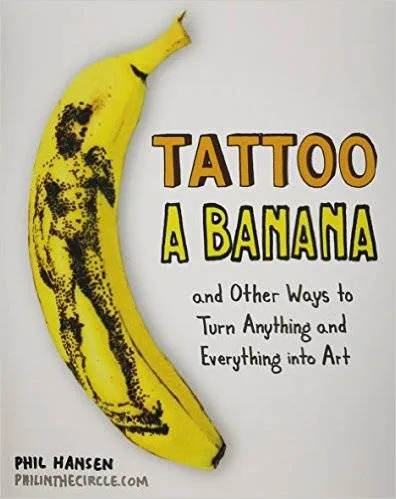 Tattoo A Banana and Other Ways to Turn Anything and Everything into Art by Phil Hansen
From Phil Hansen, renowned multimedia artist whose TED Talk “Embrace the Shake” is inspiring individuals around the world to overcome their limitations and express themselves creatively, comes this entertaining and witty guide to turning everyday objects into art. Using items that include a piece of toast, a plastic bag, or even just your own fingerprints, this fun and captivating guide will inspire you to get creative.
Whether you want to jumpstart, rediscover or further your creative pursuits, this book will help you build your creative muscles by experimenting with the unexpected. Once you tattoo a banana, print on marshmallows, or mold a Mona Lisa sugar cookie, you’ll definitely be curious about what else is possible.
Read this when. . . you are looking for creative ways to play with your food. It’ll force you to look at the every day objects in your own worldspace that can inspire creativity and out-of-the-box thinking.
Tattoo A Banana and Other Ways to Turn Anything and Everything into Art by Phil Hansen
From Phil Hansen, renowned multimedia artist whose TED Talk “Embrace the Shake” is inspiring individuals around the world to overcome their limitations and express themselves creatively, comes this entertaining and witty guide to turning everyday objects into art. Using items that include a piece of toast, a plastic bag, or even just your own fingerprints, this fun and captivating guide will inspire you to get creative.
Whether you want to jumpstart, rediscover or further your creative pursuits, this book will help you build your creative muscles by experimenting with the unexpected. Once you tattoo a banana, print on marshmallows, or mold a Mona Lisa sugar cookie, you’ll definitely be curious about what else is possible.
Read this when. . . you are looking for creative ways to play with your food. It’ll force you to look at the every day objects in your own worldspace that can inspire creativity and out-of-the-box thinking.
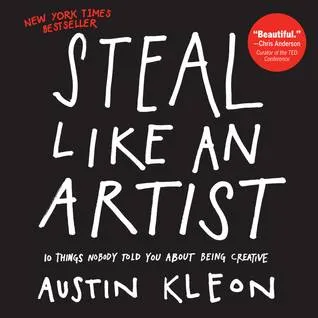 Steal Like an Artist by Austin Kleon
You don’t need to be a genius, you just need to be yourself. That’s the message from Austin Kleon, a young writer and artist who knows that creativity is everywhere, creativity is for everyone. A manifesto for the digital age, Steal Like an Artist is a guide whose positive message, graphic look and illustrations, exercises, and examples will put readers directly in touch with their artistic side.
Read this when . . . you feel like you’re a fraud or that you’ve got nothing left creatively inside you. This is such a great jump starter of a book for me, in that I love seeing “how to” messages depicted in unconventional ways:
Steal Like an Artist by Austin Kleon
You don’t need to be a genius, you just need to be yourself. That’s the message from Austin Kleon, a young writer and artist who knows that creativity is everywhere, creativity is for everyone. A manifesto for the digital age, Steal Like an Artist is a guide whose positive message, graphic look and illustrations, exercises, and examples will put readers directly in touch with their artistic side.
Read this when . . . you feel like you’re a fraud or that you’ve got nothing left creatively inside you. This is such a great jump starter of a book for me, in that I love seeing “how to” messages depicted in unconventional ways:
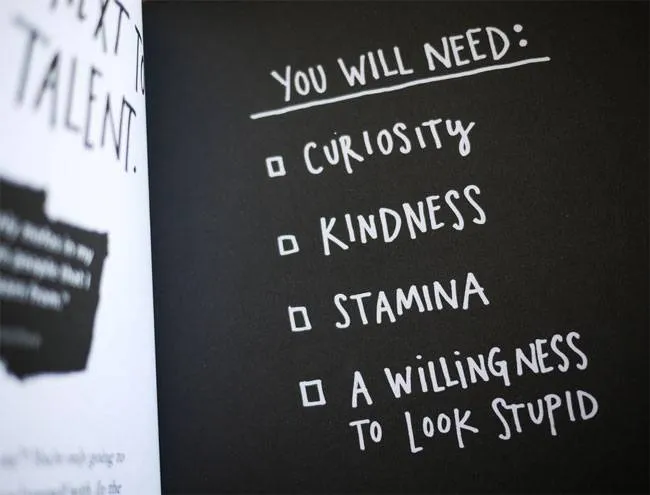 If this book ends up speaking to you, pick up Kleon’s Show Your Work. I think I might like that one a little bit better, but it’s less about kick starting creativity and more about how to engage people in your art — how you can use social media, for example, to give people a look “behind the scenes” of you doing your work and thus compel them to care.
If this book ends up speaking to you, pick up Kleon’s Show Your Work. I think I might like that one a little bit better, but it’s less about kick starting creativity and more about how to engage people in your art — how you can use social media, for example, to give people a look “behind the scenes” of you doing your work and thus compel them to care.
 Any coloring book that speaks to you (and some suggestions can be found right here).
Read this when . . . you really want to be creating something, but you need some sort of parameters from which to work. If the biggest choice you have to make is what kind of coloring tools to use and which colors to shade in, you can create in a way that’s relaxing and opens your mind up for free-flowing thought.
I kind of think that this mass explosion of coloring books for grown ups is best credited to good marketing right now. I’m a young adult, but my friends have been coloring for years and years into our adulthood — it’s not a new, hip, trendy thing for us. I colored this masterpiece at the ripe age of 28 (and yes I hung it on my fridge):
Any coloring book that speaks to you (and some suggestions can be found right here).
Read this when . . . you really want to be creating something, but you need some sort of parameters from which to work. If the biggest choice you have to make is what kind of coloring tools to use and which colors to shade in, you can create in a way that’s relaxing and opens your mind up for free-flowing thought.
I kind of think that this mass explosion of coloring books for grown ups is best credited to good marketing right now. I’m a young adult, but my friends have been coloring for years and years into our adulthood — it’s not a new, hip, trendy thing for us. I colored this masterpiece at the ripe age of 28 (and yes I hung it on my fridge):
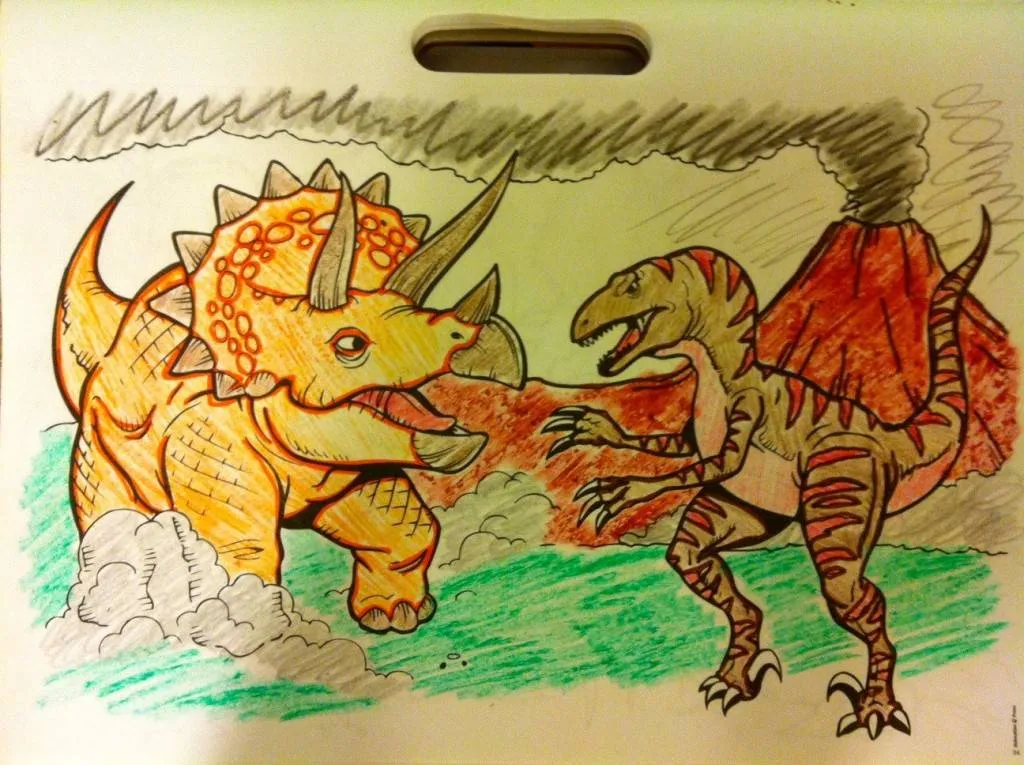
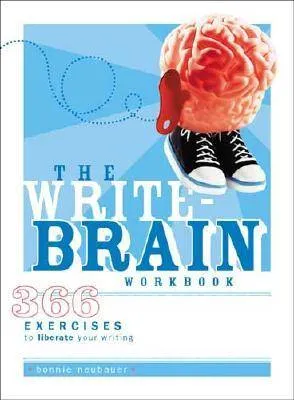 The Write-Brain Workbook by Bonnie Neubauer
Never face a blank page again! With unique daily prompts and stimulating pages, you’ll be able to easily incorporate writing into your life, and you’ll never have to face another wordless day. The Write-Brain Workbook is the first of its kind–an easy, fun, and playful way to exercise your creative writing muscles each day.
Eliminate the dreaded emptiness of the blank page. Write without the pressure of preconceived expectations. Learn about your own unique writing process. Build the momentum of a quick daily writing practice
Unlock writer’s block. Apply the breakthroughs from daily practice to your “real” writing.
Read this when . . . you’re ready to sit down and make some really bad creative work. But it won’t all be bad. This is the kind of interactive workbook for writers that involves prompts that push your brain into new and different directions. That can mean pages and pages of crap you produce. The important part, though, is it is a series of exercises and sometimes it’s through working muscles in new ways that you learn you have some strengths you weren’t pulling from before.
I’ve read and used a number of prompt-y type books before, but this is the only one I’ve kept, as I’m a pretty voracious weeder of my bookshelves. I feel like keeping it says a lot for the value it provides.
It also looks like this book is getting a new edition in October, which I’m putting on my to-buy list now.
The Write-Brain Workbook by Bonnie Neubauer
Never face a blank page again! With unique daily prompts and stimulating pages, you’ll be able to easily incorporate writing into your life, and you’ll never have to face another wordless day. The Write-Brain Workbook is the first of its kind–an easy, fun, and playful way to exercise your creative writing muscles each day.
Eliminate the dreaded emptiness of the blank page. Write without the pressure of preconceived expectations. Learn about your own unique writing process. Build the momentum of a quick daily writing practice
Unlock writer’s block. Apply the breakthroughs from daily practice to your “real” writing.
Read this when . . . you’re ready to sit down and make some really bad creative work. But it won’t all be bad. This is the kind of interactive workbook for writers that involves prompts that push your brain into new and different directions. That can mean pages and pages of crap you produce. The important part, though, is it is a series of exercises and sometimes it’s through working muscles in new ways that you learn you have some strengths you weren’t pulling from before.
I’ve read and used a number of prompt-y type books before, but this is the only one I’ve kept, as I’m a pretty voracious weeder of my bookshelves. I feel like keeping it says a lot for the value it provides.
It also looks like this book is getting a new edition in October, which I’m putting on my to-buy list now.
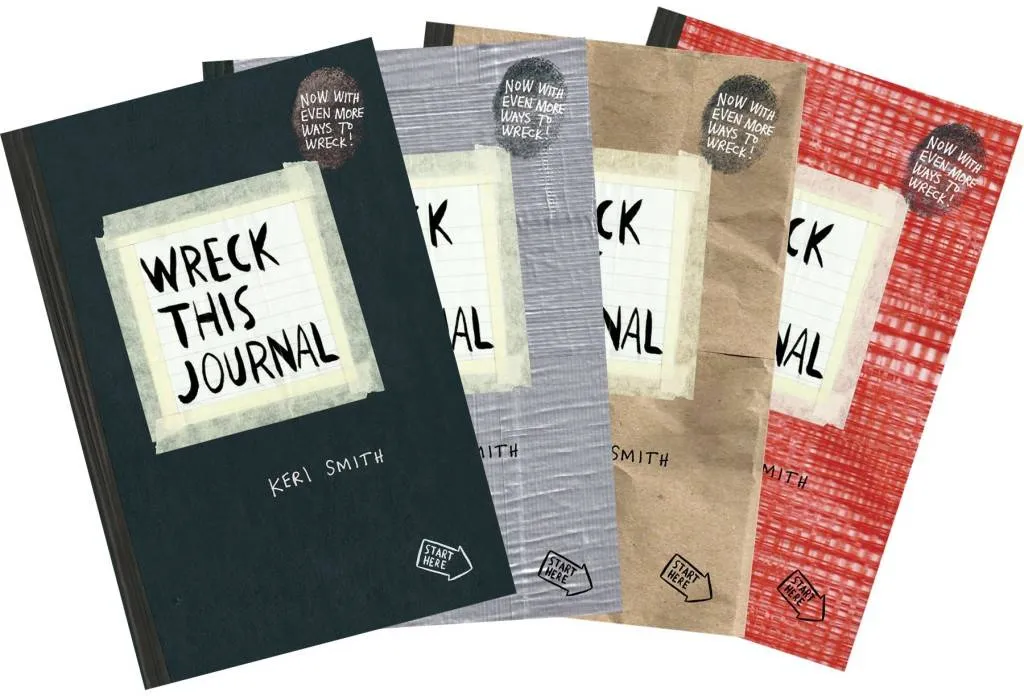 Wreck This Journal by Keri Smith
For anyone who’s ever wished to, but had trouble starting, keeping, or finishing a journal or sketchbook comes Wreck This Journal, an illustrated book that features a subversive collection of prompts, asking readers to muster up their best mistake- and mess-making abilities to fill the pages of the book (and destroy them). Acclaimed illustrator Keri Smith encourages journalers to engage in “destructive” acts-poking holes through pages, adding photos and defacing them, painting with coffee, and more-in order to experience the true creative process. Readers discover a new way of art and journal making-and new ways to escape the fear of the blank page and fully engage in the creative process.
Read this when . . . you’re willing to let go of the strangely encoded belief that books are sacred objects that exist in only one form. Smith will force you to do really unconventional tasks with the journal, including spill stuff on it, rip it, write all over it, jump on it, and so forth. It’s meant to break you from your boxed-in thinking and force you to reconsider the notions you have about what you can and can’t do creatively.
Wreck This Journal by Keri Smith
For anyone who’s ever wished to, but had trouble starting, keeping, or finishing a journal or sketchbook comes Wreck This Journal, an illustrated book that features a subversive collection of prompts, asking readers to muster up their best mistake- and mess-making abilities to fill the pages of the book (and destroy them). Acclaimed illustrator Keri Smith encourages journalers to engage in “destructive” acts-poking holes through pages, adding photos and defacing them, painting with coffee, and more-in order to experience the true creative process. Readers discover a new way of art and journal making-and new ways to escape the fear of the blank page and fully engage in the creative process.
Read this when . . . you’re willing to let go of the strangely encoded belief that books are sacred objects that exist in only one form. Smith will force you to do really unconventional tasks with the journal, including spill stuff on it, rip it, write all over it, jump on it, and so forth. It’s meant to break you from your boxed-in thinking and force you to reconsider the notions you have about what you can and can’t do creatively.
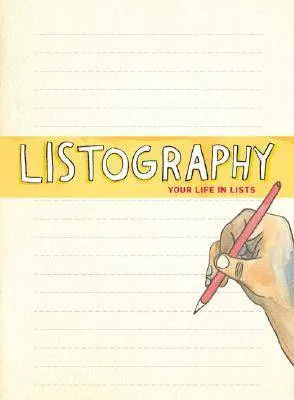 Listography: Your Life in Lists by Lisa Nola
List-makers rejoice! This quirky and imaginative guided journal is the ultimate tool for creating a unique autobiography entirely in list form. Some lists are obvious (greatest accomplishments, best friends, favorite food), others obscure (guiltiest pleasures, greatest acts of kindness, personal fashion trends), and each list is accompanied by hilarious illustrations. Listography is perfect for getting down all the details of a life less ordinary.
Read this when . . . you think you have nothing left from which you can pull to be creative. You do. I’m a huge advocate of list-making because it forces you to think about ordinary things that otherwise escape your everyday attention. Have you ever spent time thinking about ten of your favorite words? Ten of your least favorite words? Your five favorite dinosaurs? Your favorite patterns? You can unlock a surprising amount of creative thinking just by making lists.
Listography: Your Life in Lists by Lisa Nola
List-makers rejoice! This quirky and imaginative guided journal is the ultimate tool for creating a unique autobiography entirely in list form. Some lists are obvious (greatest accomplishments, best friends, favorite food), others obscure (guiltiest pleasures, greatest acts of kindness, personal fashion trends), and each list is accompanied by hilarious illustrations. Listography is perfect for getting down all the details of a life less ordinary.
Read this when . . . you think you have nothing left from which you can pull to be creative. You do. I’m a huge advocate of list-making because it forces you to think about ordinary things that otherwise escape your everyday attention. Have you ever spent time thinking about ten of your favorite words? Ten of your least favorite words? Your five favorite dinosaurs? Your favorite patterns? You can unlock a surprising amount of creative thinking just by making lists.
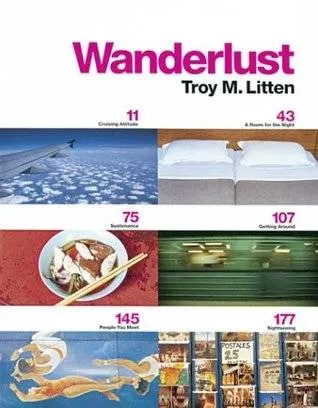 Image-heavy “fun” books on topics that excite you or provoke curiosity.
Read this when . . . you’re not necessarily interested in a book about creativity. I picked up a copy of Troy M. Litten’s Wanderlust on a whim at a bookstore years ago and I constantly go back to it (and I have the postcards that go with it, too). Some of the images are straightforwardly about travel, but others are bizarre in a way that gets my mind working. There’s something about the visuals in this book that works for me. It’s highly imaginative and focused around the idea of wanderlust . . . and it’s my brain that seeks some sort of “answers” to the questions I didn’t know I’d find in mere pictures. Plus, the way these images are constructed is pretty damn fun. I love this look at different cows across America — it’s not what you’d expect:
Image-heavy “fun” books on topics that excite you or provoke curiosity.
Read this when . . . you’re not necessarily interested in a book about creativity. I picked up a copy of Troy M. Litten’s Wanderlust on a whim at a bookstore years ago and I constantly go back to it (and I have the postcards that go with it, too). Some of the images are straightforwardly about travel, but others are bizarre in a way that gets my mind working. There’s something about the visuals in this book that works for me. It’s highly imaginative and focused around the idea of wanderlust . . . and it’s my brain that seeks some sort of “answers” to the questions I didn’t know I’d find in mere pictures. Plus, the way these images are constructed is pretty damn fun. I love this look at different cows across America — it’s not what you’d expect:
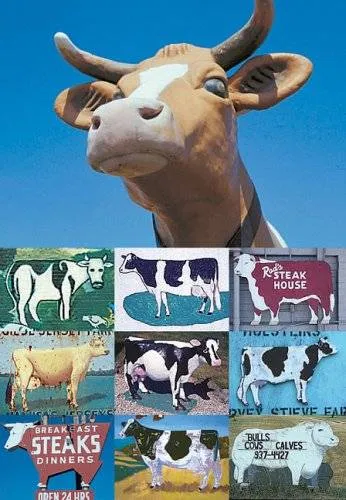 Another odd book I find great creative inspiration in is Robots and Spaceships by Teruhisa Kitahara and Yukio Shimizu. It’s part of a series of small — physically small, that is — books called the TASCHEN Icons. Each explores something different, ranging from traditional art to tattoos to architecture and, as you’ve guessed by the title of the one I love, robots and spaceships. The reason this particular book works for me is it’s image driven and I’m exceptionally fascinated by the look of and purpose of robots. It’s childlike and fun to me and tapping into that wonder can set the gears into motion.
These books, which can literally be anything, are the kinds of things we tend to pick up and look at in bookstores and put back down, wondering why we’d want to have it. That exact question is why sometimes I make myself buy the thing. I don’t know why I want to have it, but I know I’ll come back to it with that question and want an answer to it.
Everyone finds inspiration and refills the well in different ways. There are different things that speak to us, even if it’s not something we ever find ourselves writing about or drawing pictures of or thinking deeply about.
So tell me: what are your go-to books for creative inspiration? What helps you dabble in new things or favorite things in a way that sparks your imagination again?
Another odd book I find great creative inspiration in is Robots and Spaceships by Teruhisa Kitahara and Yukio Shimizu. It’s part of a series of small — physically small, that is — books called the TASCHEN Icons. Each explores something different, ranging from traditional art to tattoos to architecture and, as you’ve guessed by the title of the one I love, robots and spaceships. The reason this particular book works for me is it’s image driven and I’m exceptionally fascinated by the look of and purpose of robots. It’s childlike and fun to me and tapping into that wonder can set the gears into motion.
These books, which can literally be anything, are the kinds of things we tend to pick up and look at in bookstores and put back down, wondering why we’d want to have it. That exact question is why sometimes I make myself buy the thing. I don’t know why I want to have it, but I know I’ll come back to it with that question and want an answer to it.
Everyone finds inspiration and refills the well in different ways. There are different things that speak to us, even if it’s not something we ever find ourselves writing about or drawing pictures of or thinking deeply about.
So tell me: what are your go-to books for creative inspiration? What helps you dabble in new things or favorite things in a way that sparks your imagination again?











